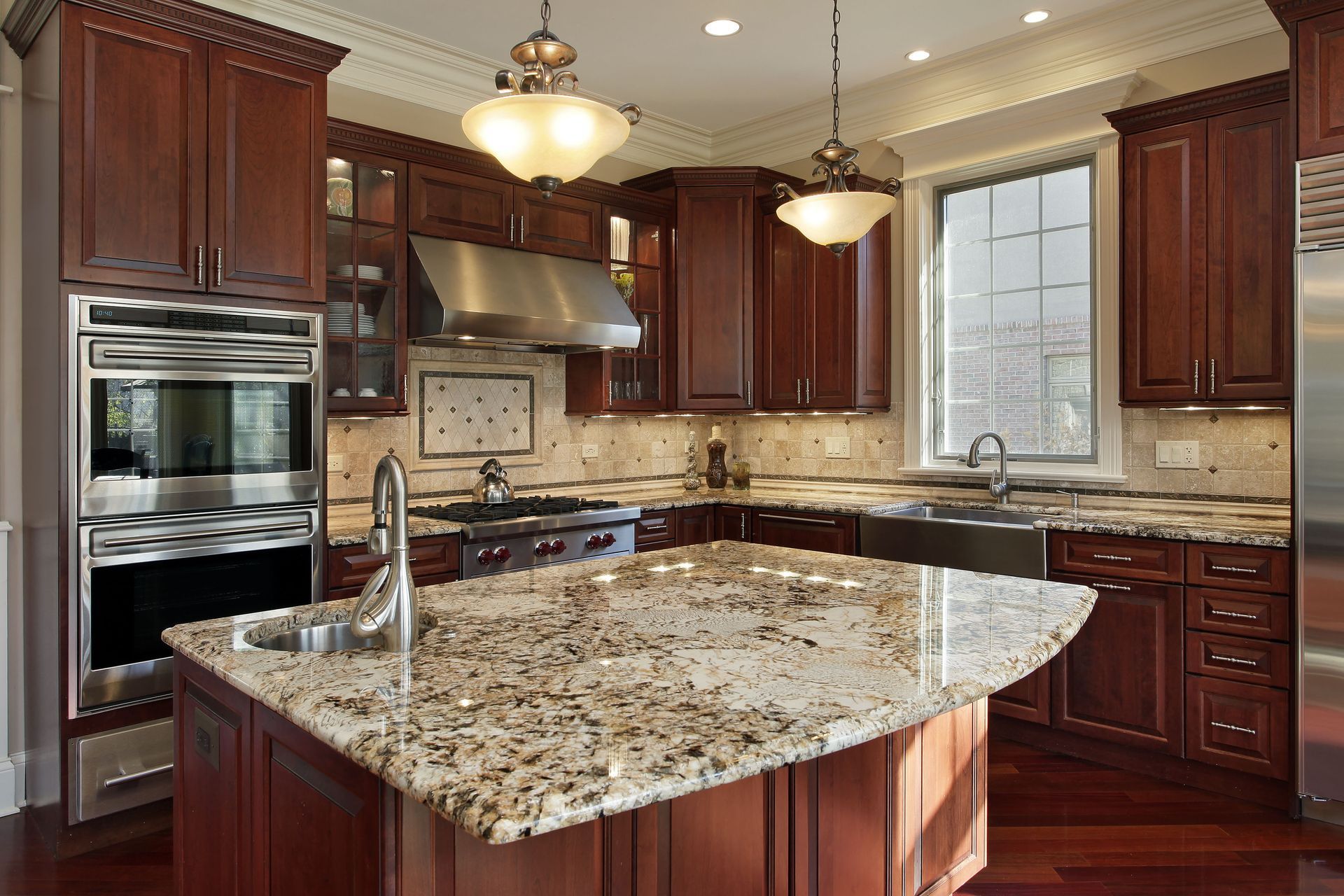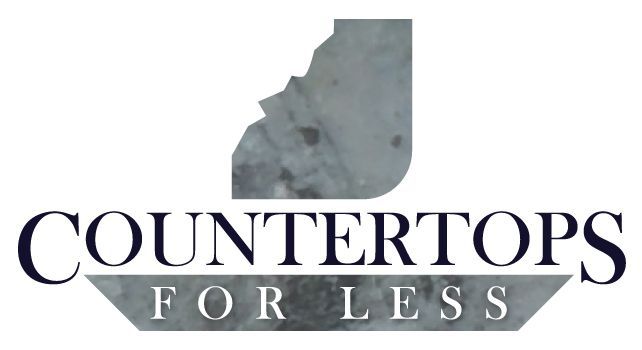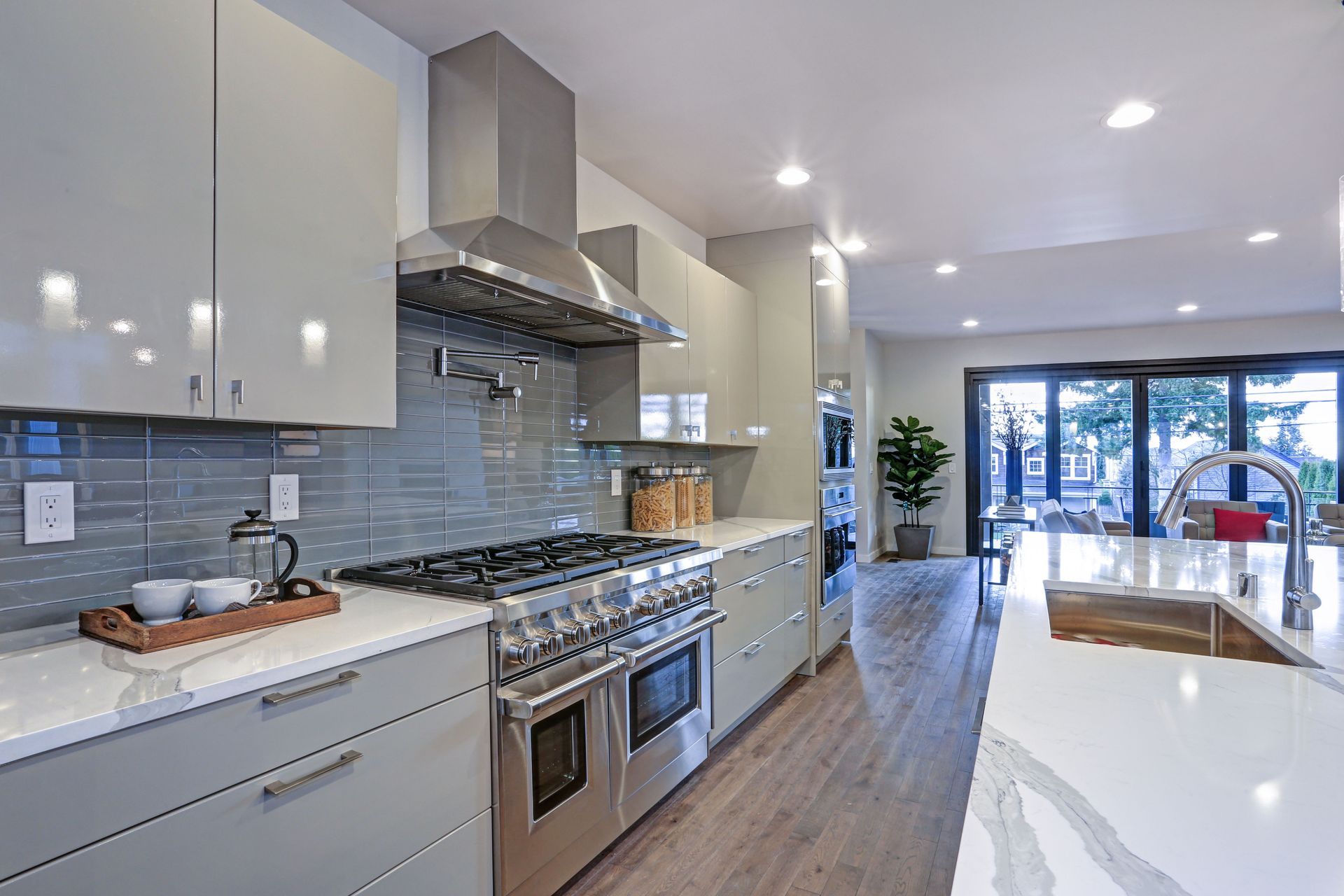How to Care for Your New Granite Countertop
A granite countertop is one of the most durable and visually striking materials you can add to your home. Their natural variations and rich patterns bring elegance and functionality to kitchens, bathrooms, and outdoor areas alike. According to Forbes, granite countertops can last for 100 years or more, which makes caring for them properly all the more important. A thoughtful maintenance routine preserves their beauty and protects your investment for decades to come. This guide will walk you through simple daily habits and long-term care tips that help keep your granite surfaces looking brand new.
Sealing Granite to Protect Its Surface
Although granite is a hard and dense stone, it remains porous and can absorb liquids if not properly sealed. This can lead to staining, especially from substances like red wine, oils, and acidic foods. To prevent damage, reseal your granite countertops periodically.
A simple water test can help determine if resealing is needed. Pour a few drops of water on the surface—if the water is absorbed within a few minutes, it's time to reseal. Always follow the manufacturer’s instructions when applying sealant and ensure the surface is clean and dry beforehand.
Cleaning Granite Countertops Regularly and Correctly
Routine cleaning is essential for keeping granite surfaces looking new and performing well over time. Although granite is known for its durability and resistance to heat and scratches, using the wrong cleaning products or techniques can gradually dull its polished finish and weaken the sealant that protects the stone from stains and moisture.
Use a pH-balanced stone cleaner specifically formulated for daily cleaning on natural surfaces. Alternatively, a mild dish soap and warm water mixture works well for most messes. Spray the solution on the surface and gently wipe it with a soft, non-abrasive cloth or sponge. Avoid harsh chemicals like vinegar, ammonia, bleach, or acidic cleaners, as they can etch the stone and degrade the sealant over time. Similarly, steer clear of steel wool or rough scrubbers that may scratch the surface.
Before applying any cleaner, remove crumbs and debris with a dry microfiber cloth to prevent accidental scratching. Once the surface is clean, dry it thoroughly with a separate microfiber cloth to eliminate water spots and maintain a streak-free shine. This simple habit not only preserves the countertop’s brilliance but also helps extend the life of its protective coating, keeping your granite countertop in high-quality condition for decades.
Wiping Spills Immediately to Prevent Staining
One of the easiest ways to maintain granite is by cleaning up spills immediately. Allowing liquids to sit—especially those high in acid or oil—can lead to stubborn stains that are difficult to remove. Use a soft cloth or paper towel to blot (not wipe) the spill to avoid spreading it. A baking soda paste can help draw out the residue for oil-based stains, while hydrogen peroxide may be used for organic stains like coffee or wine.
By acting quickly, you preserve the stone's integrity and reduce the risk of permanent marks that can affect its appearance and value.
Using Cutting Boards and Trivets to Avoid Damage
Granite is tough but not immune to scratches, chips, or heat shock. Protect your countertop by using cutting boards instead of chopping directly on the stone. While granite can withstand a lot of heat, placing hot pots or pans directly on the surface can cause thermal stress, leading to cracks or discoloration over time. Always use trivets or heat-resistant mats to provide a barrier between your cookware and the countertop.
Additionally, avoid dragging heavy or sharp objects across the surface. Small grains of debris under these items can scratch the finish and dull the natural shine.
Avoiding Harsh Chemicals and Abrasive Tools
Harsh cleaning products may be effective on other surfaces, but they can cause damage to granite. Avoid bleach, bathroom cleaners, degreasers, or any products with acidic or alkaline ingredients. These substances break down the protective sealant and can lead to etching and discoloration.
Also, stay away from steel wool, scouring pads, or stiff-bristled brushes. Stick to soft sponges or microfiber cloths for daily cleaning and spot treatment. With gentle tools and the right products, you can maintain the polished surface without unnecessary wear.
Comparing Granite With Other Countertop Materials
While granite is known for its strength, longevity, and luxury appearance, it’s important to compare it with other popular countertop materials before making a decision. Quartz is a leading alternative—engineered for durability and consistency, it’s non-porous and does not require sealing, making it especially low-maintenance. However, granite’s appeal lies in its natural origin, offering one-of-a-kind veining and color variations that can’t be duplicated. Marble, though equally elegant, is softer and more prone to scratching and staining. Laminate and solid surface counters are more affordable, but lack the heat resistance, durability, and high-end aesthetic that granite naturally provides.
Laminate countertops are less expensive but are also more susceptible to scratches, burns, and wear over time. Marble provides a similarly high-end look but is softer and more prone to staining and etching. Concrete countertops offer a custom aesthetic but require significant upkeep and resealing.
Ultimately, granite provides a strong balance of beauty, durability, and value, especially when properly maintained.
Maintaining Granite Countertops Over the Long Term
In addition to regular cleaning and resealing, long-term care involves being proactive with everyday use. Rotate decor and appliances to avoid uneven fading, especially in areas exposed to direct sunlight. Be cautious with personal care products in bathrooms, such as hair dye or nail polish remover, which can stain or damage the stone.
If your granite starts to lose its shine despite regular maintenance, consider hiring a professional to polish and restore its luster. This process can remove light scratches and return the surface to its original smoothness and gloss.
Avoiding Common Maintenance Mistakes
Even with the best intentions, homeowners sometimes make mistakes that shorten the life of their granite countertop. One of the most common errors is skipping routine sealing, which leaves the surface vulnerable to stains and bacteria. Others include using the countertop as a cutting board, storing heavy appliances without pads, or applying inappropriate cleaners.
Educating yourself on proper granite care helps prevent these mistakes and extends the life and beauty of your granite countertop. The right habits can preserve your investment and reduce the need for costly restoration or replacement.
Granite has earned its reputation as a timeless choice for kitchens, bathrooms, and outdoor living spaces. It offers exceptional heat resistance, scratch durability, and aesthetic appeal. When maintained well, granite surfaces not only retain their shine but also increase the value and sophistication of your home. It’s a natural material that blends beauty and performance, making it a smart long-term choice for any homeowner.
Taking a proactive approach to granite maintenance ensures your countertops remain as striking and functional as the day they were installed. With simple daily habits, the right products, and occasional professional help, you can enjoy the full benefits of a granite countertop for many years to come. A little attention goes a long way when it comes to preserving the elegance and resilience of this natural stone. For professional guidance, quality products, or to explore beautiful granite options for your home, contact Countertops For Less today. Our team is here to help you get the most out of your investment with lasting value and style.





Share On: